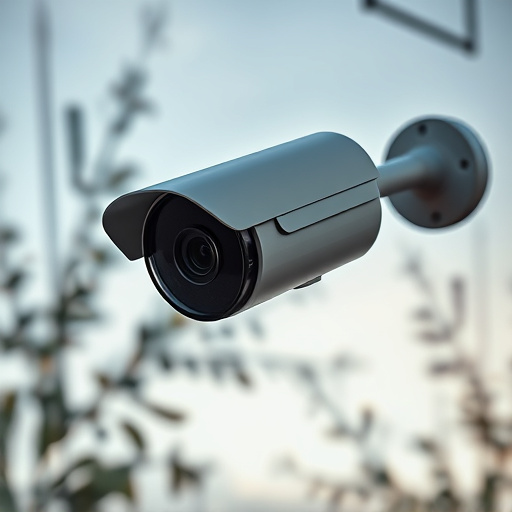Optimal outdoor dummy camera placement involves strategic angles and positioning at eye level to eliminate blind spots. Adjustable lenses cover wide areas, while telephoto lenses zoom in on details. Mounting on posts or walls blends them into surroundings for enhanced deterrence without compromising security. Regular cleaning, battery checks, and optimizing settings for outdoor conditions ensure continuous effective monitoring.
Professional-grade dummy security equipment offers a discreet yet effective solution for enhancing home and business safety. This article guides you through essential aspects of outdoor dummy camera setup, from strategic location selection and understanding various camera types to optimal angle tips for comprehensive surveillance. Learn how to install and maintain these devices properly to ensure longevity and maximize their protective benefits.
- Choosing the Right Outdoor Dummy Camera Locations
- Understanding Different Dummy Camera Types
- Setting Optimal Angles for Effective Surveillance
- Tips for Discreet Installation and Placement
- Maintaining Dummy Security Cameras for Longevity
Choosing the Right Outdoor Dummy Camera Locations
When selecting locations for outdoor dummy security cameras, consider strategic angles that mimic natural surveillance points. Placement near entryways, windows, and perimeter fences offers optimal coverage, as these are common areas of concern for potential intruders. Positioning the cameras at eye level or slightly elevated can provide a comprehensive view, capturing both ground-level activities and overhead movements.
For maximum effectiveness, vary camera angles to ensure a 360-degree view. Overlapping fields of vision between multiple cameras helps eliminate blind spots. Additionally, positioning them behind obstacles like shrubs or trees can add an element of surprise for would-be thieves, as these hidden cameras can detect activities that might go unnoticed by traditional security systems.
Understanding Different Dummy Camera Types
Dummy security cameras, designed to deter crime and provide peace of mind, come in various types, each offering unique features for different outdoor surveillance needs. Understanding these differences is crucial when selecting equipment for your property. One key aspect to consider is camera angle; this determines the field of view and coverage area.
Outdoor dummy cameras often feature adjustable angles, allowing users to point them towards specific areas of concern. For example, a wide-angle lens captures a broader landscape view, ideal for monitoring large open spaces or multiple entrances. Conversely, telephoto lenses offer a narrower field but can zoom in on distant objects or suspicious activity from afar. These angle tips ensure optimal coverage, enhancing the overall security strategy.
Setting Optimal Angles for Effective Surveillance
When setting up outdoor dummy security cameras, understanding and optimizing angle placement is key for effective surveillance. Aim to position your dummy camera at an eye-level height, simulating a real observer’s perspective. This reduces blind spots and ensures a clear view of entry points, paths, or areas you want to monitor. The ideal angle should allow the camera to capture a wide field of view, typically between 70 to 90 degrees, covering a significant portion of the targeted area without distortion.
To get the best Outdoor Dummy Camera Angle Tips, consider the environment and your surveillance goals. Avoid placing the camera too high, which might limit its field of vision, or too low, where it could capture unwanted objects like vegetation or obstructions. Adjusting the angle slightly can make a big difference in data quality and the effectiveness of the entire security setup.
Tips for Discreet Installation and Placement
When installing outdoor dummy security cameras, discretion is key. To maximize their effectiveness while maintaining a low-profile, consider these angle tips. Positioning them at eye level or slightly elevated ensures optimal viewing coverage without drawing undue attention. Mounting them on posts, walls, or corners can help blend them into the environment, making it harder for potential intruders to identify as dummy cameras.
Additionally, aim the camera lenses towards areas of high activity and visibility. Strategically choosing an outdoor dummy camera’s angle allows you to capture clear images of entries, windows, or any other vulnerable points. By combining discretion with strategic placement, you enhance the deterrent effect of these devices without compromising on security.
Maintaining Dummy Security Cameras for Longevity
To ensure the longevity of your outdoor dummy security cameras, regular maintenance is key. Start by cleaning the lenses and housing with a soft, dry cloth to remove any dust or debris that could impact image quality. Use a mild soap solution and warm water for more stubborn stains, being careful not to get any moisture inside the camera.
When it comes to outdoor dummy camera angle tips, positioning is everything. Mount your cameras at eye level or slightly above to mimic real surveillance. Point them towards areas of interest, such as entrances, exits, and potential points of access. Regularly check battery life and replace batteries or recharge as needed to maintain continuous monitoring. Additionally, keep an eye on the camera’s settings, ensuring they are optimized for outdoor conditions, including night vision and motion detection sensitivity.
Professional-grade outdoor dummy security equipment offers a cost-effective way to enhance home or business safety without breaking the bank. By strategically placing and angling these devices, you can create an effective surveillance system that dissuades potential intruders. With the right knowledge, choosing the best locations, understanding different types, and maintaining your cameras properly, you can ensure optimal protection for years to come. Implement these Outdoor Dummy Camera Angle Tips for enhanced security and peace of mind.
